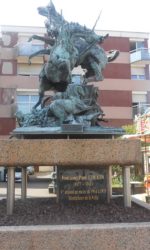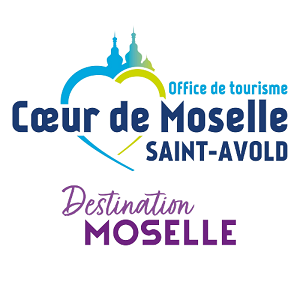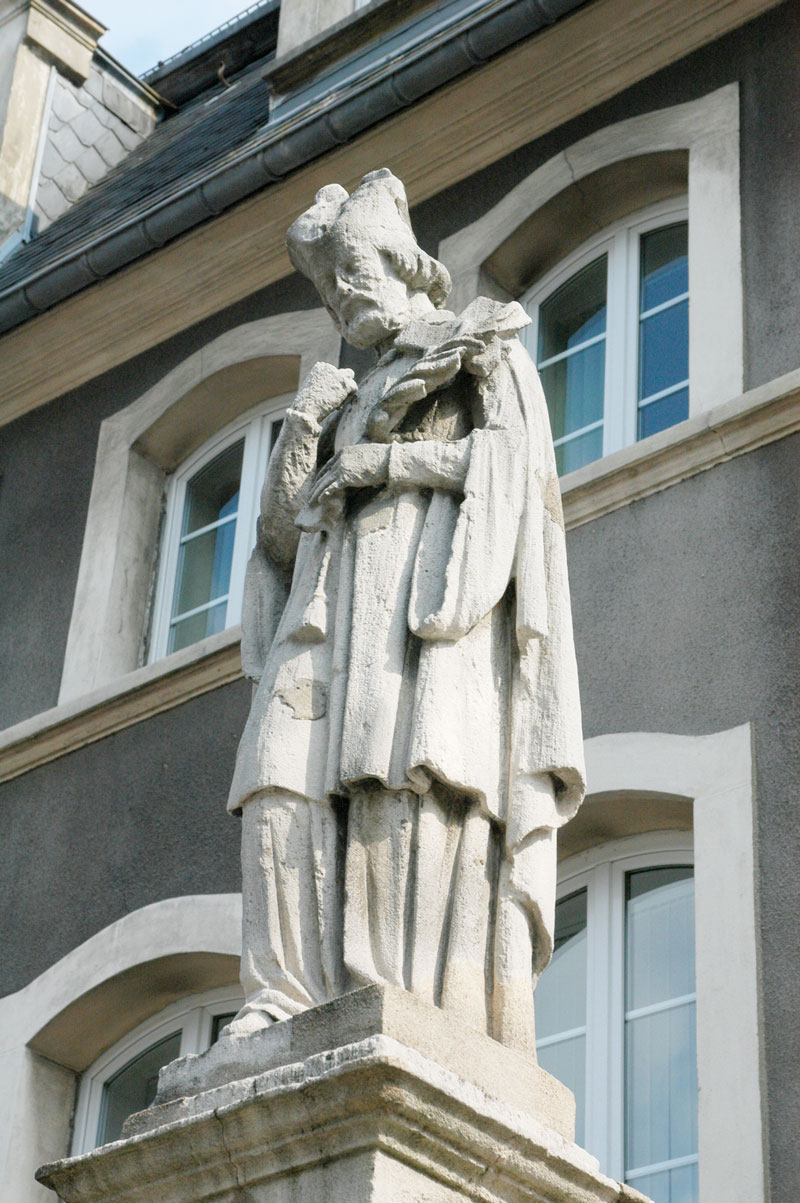For centuries, the fountains have supplied spring water, free of charge, to the inhabitants. But they required costly maintenance. Besides their huge advantages, they generated many nuisances for the local residents (sometimes served as trash, some did the laundry, in winter the leaks and overflows formed dangerous sheets of ice). Degraded during the Revolution and the last world conflict, they have been rehabilitated. They beautify the city but no longer provide spring water.The first three appeared in 1714, to improve the quality of the spring water supply. All three have similarities: a hexagonal or octagonal basin, with a bulging baluster in the center, each time surmounted by a statue. However, each tells a different story…
![]()
Fountain of Saint-Jean Népomucène
Rue Hirschauer
At the intersection of rue Hirschauer and avenue Clémenceau On this fountain stands the statue of Saint Jean Népomucène. He was confessor and bishop of Prague (Czech Republic). This Saint was martyred in 1385 by the cruel Emperor Wenceslas. He didn’t want to betray the secret of the confession of the queen, the beautiful Judith, whom the emperor suspected of adultery. Saint Jean de Népomucène was thrown from Saint Charles Bridge in Prague. Today he is the protector of bridges. The statue, placed in 1734, was made by Johann Krevener, a Tyrolean stonemason living in Sarre-Union. His devotion was brought to Saint-Avold by Charles de Hennin who invokes this Saint when he fights the Ottomans.
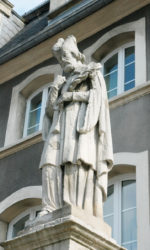
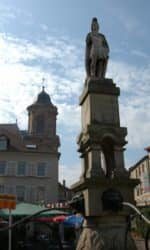
Fountain of Saint-Nabor
On the Place de la Victoire
The Saint-Nabor fountain was built in 1714. It is surmounted by the patron saint of the city, Saint-Nabor, a roman soldier of a noble family who distinguished himself for his bravery. Christian, refusing to deny his religion, he was imprisoned and then martyred. Chrodegang, bishop of Metz, transferred the relics of Saint-Nabor to the Abbey which today bears his name. August 24, year 765, will become the patronal feast day.
Fountain Sainte-Marie
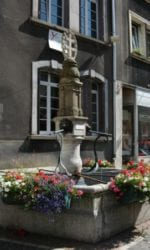
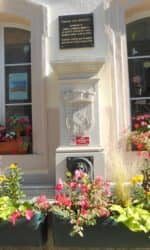
Fountain Jean Melling
Tourist Office building – rue des Américains
The fountain leans against the old Town Hall built in 1732, “rue des Charrons”, now rue des Américains. It was built in 1744 by Jean-Melling, famous sculptor from Saint-Avold, at the request of the City. This building now houses the offices of the Tourist Office. Simple and rustic, its basin was slightly removed in 1991 in order to center it in relation to the windows of the building. A central body was then added with the city arms, on which was placed the old lion’s muzzle. The fountain received in 2002 the name of “Fontaine Melling” in homage to its creator.
Fountain Wallace
Rue des Américains – Allée Paul Harris
Installed in 1992, it is a cast iron fountain 2.71 meters high and weighing 610 kg. This is a copy of the famous Wallace fountains. Sir Richard Wallace was a British philanthropist in love with the capital. Seeing the water supply crisis which affected Paris the day after the siege of 1870, he had the idea of providing the capital with 50 “drinking” fountains (in 1789, a Parisian had on average only one liter of water per day). The Wallace Fountains were the first to provide water in the capital.
There are four caryatids: goodness, charity, simplicity and sobriety that support a dome from which flows a stream of water. To facilitate distribution, two tin-plated iron cups held by chains were available to the consumer, always remaining immersed for greater cleanliness. They were abolished in 1952 by “hygiene measure”. These fountains are attributed to the sculptor Charles-Auguste Lebourg (1830-1906).
Today, there are about a hundred of this type in the capital, of which about forty date from 1872.
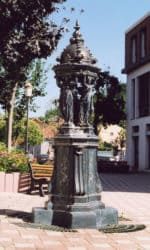
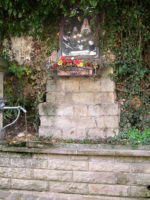
The fountains of Dourd’hal
The village of Dourd’hal, long a possession of the Benedictine abbey of Longeville became a district of Saint-Avold on January 1, 1965. Rich in its history, the village presents the visitor with the sight of three rustic and picturesque fountains. Two of them are located on the main street while the third is at the beginning of Chemin Saint-Sébastien.This one, “La Bonne Fontaine”, has the particularity of offering high quality water, coming from the Hochwald hill. Many people still come there today to get water.
Modern fountain Paul Collin
Paul Collin Square
As part of its development policy, the city has been enriched with several modern fountains. The fountain of the place Paul Collin was set up in 1980. It was built in homage to Paul Collin, born in 1877, hardware man of the place who was first deputy mayor of Saint-Avold from 1914 to 1935 and especially a benefactor of the city. He had in fact bequeathed his wealth to the welfare office upon his death in 1961.
In 2017, it was decided to decorate the fountain with the work “Amours de licornes” by sculptor Virgil.
So that this artistic arrangement speaks to all, the fountain has been represented with unicorns, a symbol of strength but also of generosity. “Amours de licornes” shows 26 mythical horses entwined. The work continues in the water of the tank with traces of hooves and twisted horns.
